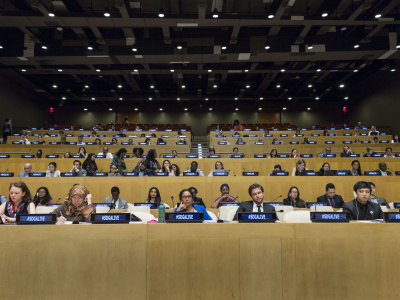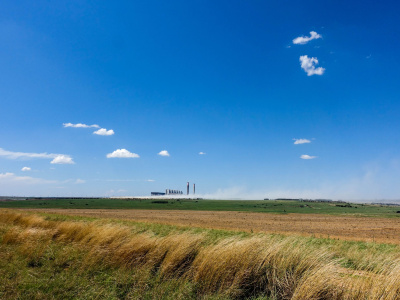
Changing demographics pulling up agriculture
Population-induced changes
West Africa’s population has increased fourfold over the last 60 years. This demographic boom is accompanied by a spatial redistribution of populations. The number of people living in cities has risen by a factor of almost 30 since 1950, from 5.3 million to about 150 million, whereas the rural population has increased by a factor of only three. Urbanisation is the most visible manifestation of settlement dynamics. This phenomenon is no longer only fed by rural migrations; the number of people born in cities has exceeded the number of people arriving from rural areas since the early 1980s.
Although uneven across the region, with coastal countries registering the highest levels, continuing urbanisation contributes to the integration of rural areas into the market economy. Urbanisation has driven the growth of both the region’s largest urban areas and small towns. Urban growth has manifested in the development of a network of small- and medium-sized towns that act as nodes for the spatial organisation of markets. The average distance between urban agglomerations has decreased from 111km to 33km since 1950. Rural density has also increased, particularly in proximity to large urban areas, with farmers now better connected to urban centres than they used to be. As a result of these dynamics, agriculture is transforming and the rural economy is diversifying. The share of agricultural producers in the total population decreased from 90% in 1950 to 50% in 2010. In rural areas, 25% of the population is no longer engaged in agricultural activities. More than two-thirds of household food consumption is bought on the market. Click on the image to enlarge As urbanisation has advanced, a growing proportion of farmers have had to produce surplus to meet the demand from increasing numbers of non-producing consumers, and they have proved able to do so. Between 1980 and 2010, agricultural production growth averaged 3.7%, making West Africa one of the fastest growing regions of the world. Per capita food production has increased by 1.9%. This performance needs to be seen in the context of the region’s demographic challenge and its inherent structural changes, with proportionally less and less producers per consumer. This growth in production is not just the result of an expansion of cultivated area; gains in yields have been particularly marked since 2000 and now account for 40% of production growth. Agricultural intensification is already under way. The market opportunities created by urbanisation are the main driving forces behind these changes in the rural economy. Accompanying these dynamics is crucial for current and future food challenges.Africapolis: A unique database on urbanisation in West Africa
Understanding population dynamics is essential for the design of effective development and food security policies. The only data available so far are national data, which are often based on different definitions of urban areas, and the little - sometimes contested - census data available. Neither data allow for cross-country comparisons or a thorough analysis of the agglomeration process in the region. The SWAC/OECD financed the update of an important study that corrects this situation. Combining census and remote sensing data, as well as building on a unique numerical definition of urban agglomeration as areas with a population above 10,000 inhabitants, the Africapolis study is a major step forward. Covering a period ranging from 1950 to 2010, the Africapolis database provides previously unpublished information: 1) A systematic geolocation of urban agglomerations broadening the analytical scope for mapping and spatial analysis; 2) an extensive and updated inventory of agglomerations in Nigeria, which accounts for half of the West African population; and 3) the identification of “small towns” that are not listed in any international database. The harmonisation of data points out national particularities and raises some interesting questions, such as why Nigeria’s urbanisation is slowing down compared with the regional average. The availability of disaggregated data broken down by agglomeration allows for spatial structure analysis. Sole national-level information, such as urbanisation level, in no way predicts the geographical distribution of towns, nor their size or numbers. Today, this information is essential to implement development policies. Policy and decision makers are encouraged to refer to a wide range of indicators that this database allows now to estimate. How many towns? How large are they? How are they distributed across the region? How are they connected to one another?
Rethinking food security strategies
Although population growth is slowing, the demographic transition has not been completed. As a consequence, urbanisation will continue, and by 2050, there will be two urban dwellers for every rural dweller. Subsequent agricultural transformations will be spatially and temporally diverse. These facts call for a rethinking of food security strategies in terms of both urban and rural realities, as well as space. The urban-rural relationship needs to be understood as a continuum in which markets play a crucial role. Building resilient food systems necessitates urban planning and management that is favourable to developing economic activities in both the formal and informal sectors.
The State of Food Insecurity in the World (SOFI) report states that about 34 million West Africans remained undernourished in 2014 (FAO/IFAD/WFP). The way ahead is to design programmes of actions that are spatially explicit and work towards building strong connections between urban agglomerations, and between urban agglomerations and their hinterland. The improvements of the regional food market and the future of the West African food system will depend on these. For more on the above issue please refer to:- Africapolis: www.oecd.org/swac/ourwork/africapolis.htm
- Statistical, Mapping and Regional Analysis Tool (SMART): www.westafricagateway.org/smart
- Sahel and West Africa Club Secretariat: www.oecd.org/swac
This article was published in GREAT Insights Volume 4, Issue 4 (June/July 2015).

